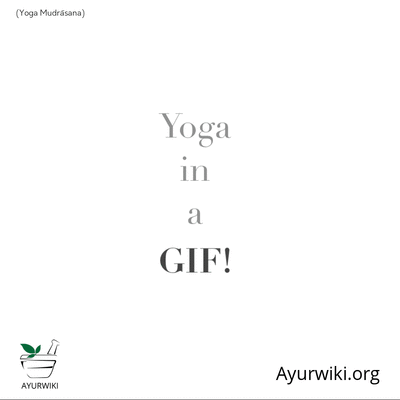Note: This is a project under development. The articles on this wiki are just being initiated and broadly incomplete. You can Help creating new pages.
Yoga Mudrasana
Yoga Mudrasana is an Asana. It is translated as Yogic Seal Pose from Sanskrit.
The name of this pose comes from "yoga" meaning "to unite", "mudra" meaning "seal", and "asana" meaning "posture" or "seat".
Contents
[hide]Technique
- Sit in Padmasana, the lotus pose. You may use a little padding or cushion under the buttocks if needed to make it more comfortable.
- Close your eyes and breathe normally.
- Bring the hands behind the back and hold the left wrist with the right hand. (There is another variation for more advanced practitioners. In this variation, the hands are crossed over behind the back. The right hand grabs the right foot and the left hand grabs the left foot.)
- Slowly bend forward and try to touch the floor in front of you with the forehead or the nose. Breathe out while bending forward. If you cannot touch the floor, go as far as it is comfortable without any strain.
- In the final position, relax the whole body, especially the shoulders and the back.
- In the position, you may breathe deeply and slowly. Try to maintain the position for few minutes.
- Slowly return to the starting position. Inhale while returning to the staring pose.
- If you are not able to maintain the final position for long, then one may do the process few times.[1]
Technique in pictures/animation
Effects
- The abdomen benefits the most from the practice of Yoga Mudrasana. It massages the abdominal organs which help in getting rid of constipation and improves digestion process.
- Expands and stretches the spine providing relief to spinal nerves and increasing its flexibility.
- Exercises the chest, therefore, preventing lung problems such as asthma.
- Practicing this pose for an extended duration of time helps to activate Manipura Chakra.[2]
Related Asanas
Special requisites
Avoid this Asana with high blood pressure or dizziness.
Initial practice notes
Instead of holding the final position, raise and lower the body several times without straining. This variation is also useful for those having a stiff body and hence not being able to touch the forehead to the floor.[3]
